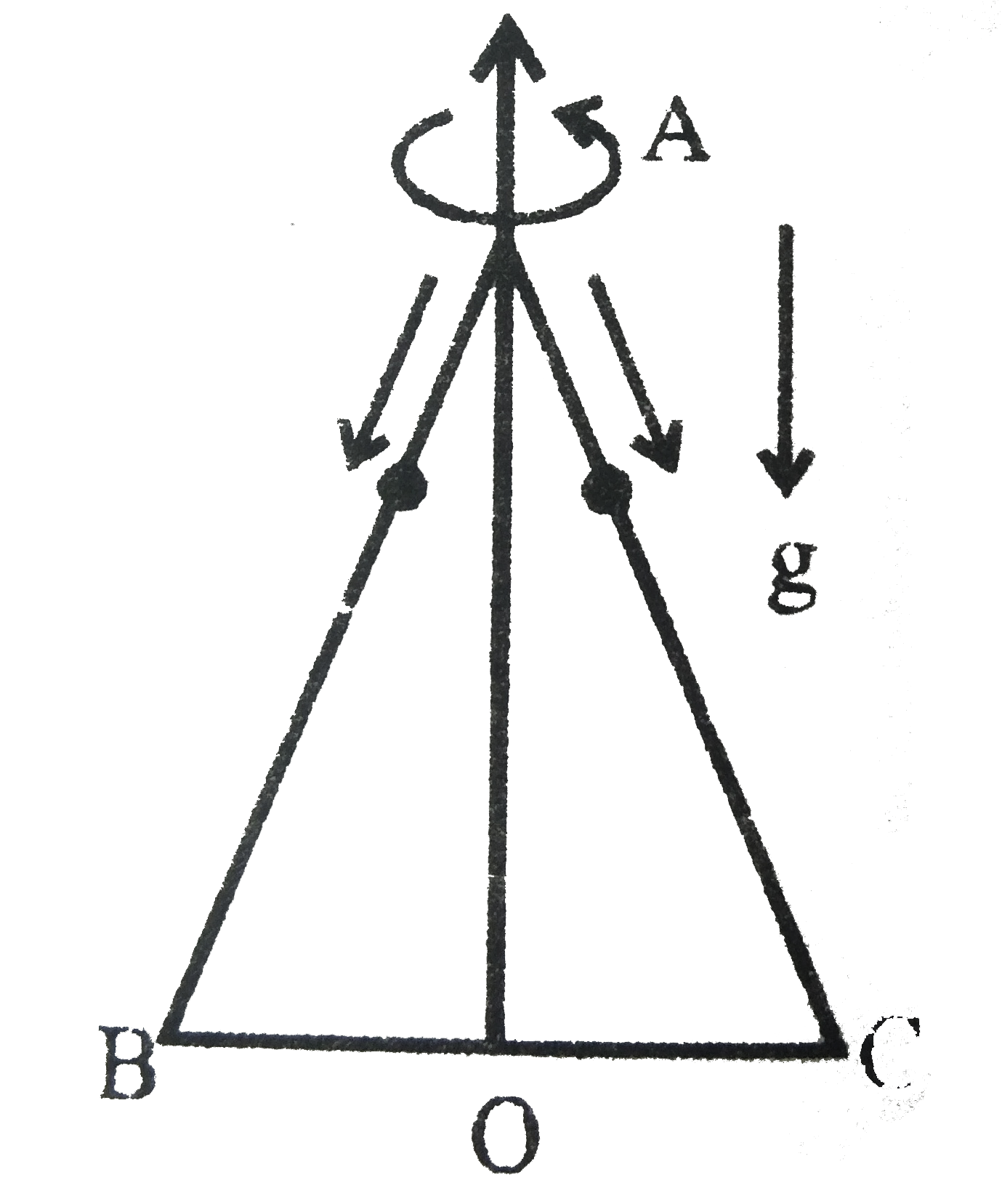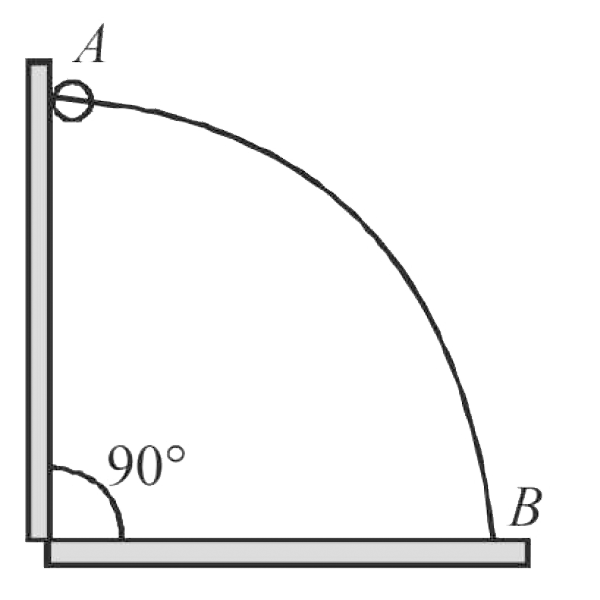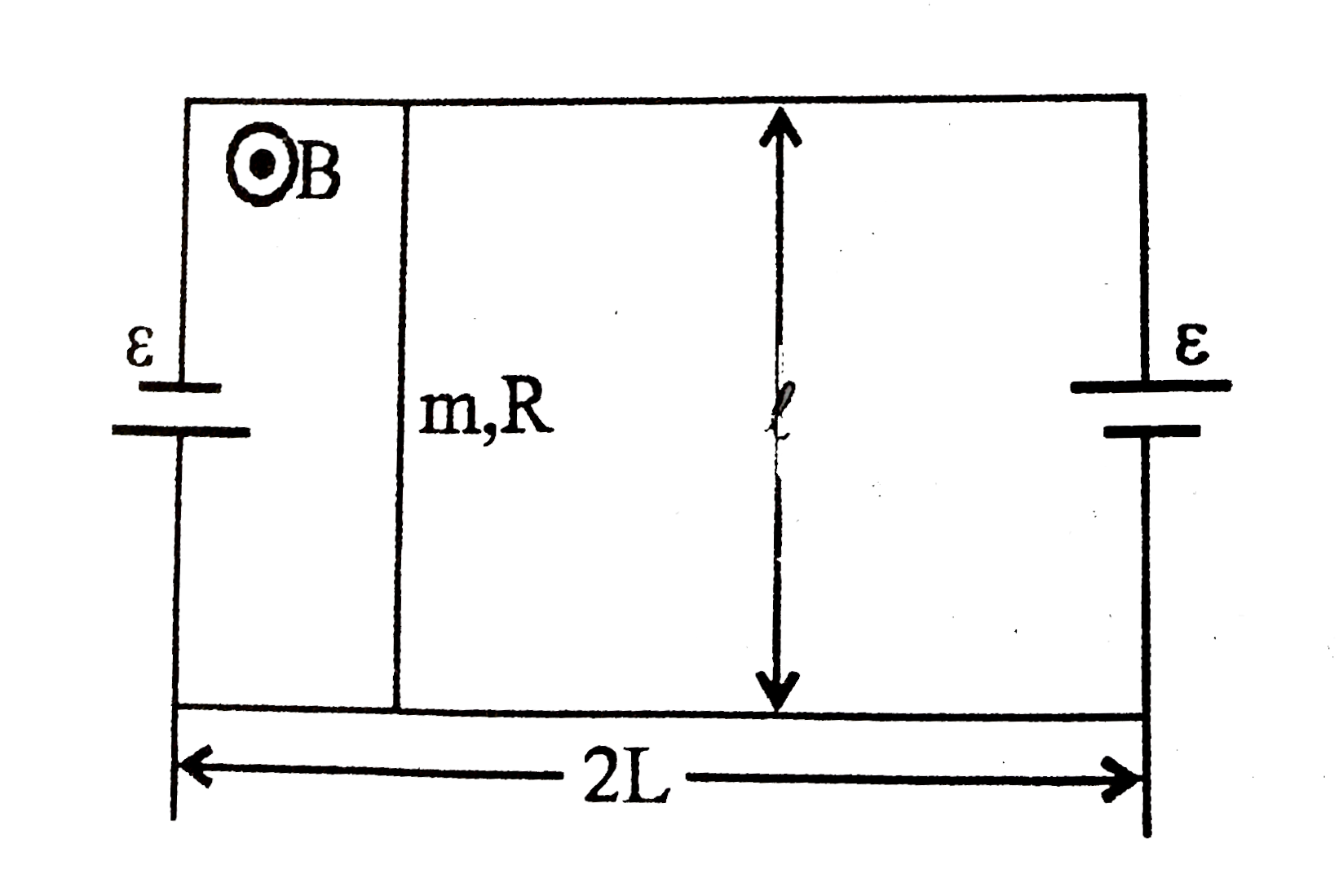An equilateral triangle ABC formed a uniform wire two small identical beads initially located at A. The triangle is set rotating abut the vertical axis AO. Then the beads are released from rest simultaneously and allowed to slideshown, one along AB and the other along AC as shown. Neglecting frictional effects, the quantities that are not conserved as the beads slide down, are

Angular velocity and total energy (kinetic energy and potential energy)
Total angular momentum and total energy
Angular velocity and moment of inertia about the axis of rotation
Totat angular momentum and momentum and moment of inertia about OA
The correct Answer is:A, C, D
Topper's Solved these Questions
- ROTATIONAL DYNAMICS BOOK - AAKASH SERIESCHAPTER - ROTATIONAL DYNAMICS EXERCISE - LECTURE SHEET (EXERCISE - IV) Law of conservation of angular momentum (Linked Comprehension Type Questions)
3 Videos
- ROTATIONAL DYNAMICS BOOK - AAKASH SERIESCHAPTER - ROTATIONAL DYNAMICS EXERCISE - LECTURE SHEET (EXERCISE - IV) Law of conservation of angular momentum (Integer Type Questions)
3 Videos
- ROTATIONAL DYNAMICS BOOK - AAKASH SERIESCHAPTER - ROTATIONAL DYNAMICS EXERCISE - LECTURE SHEET (EXERCISE - IV) Law of conservation of angular momentum (Straight Objective Type Questions)
11 Videos
- RIVISION EXERCISEBOOK - AAKASH SERIESCHAPTER - RIVISION EXERCISEEXERCISE - MOTION IN A PLANE (LAMNI.S THEOREM)
6 Videos
- ROTATIONAL MECHANICSBOOK - AAKASH SERIESCHAPTER - ROTATIONAL MECHANICSEXERCISE - Questions for Descriptive Answers
20 Videos
Similar Questions
A equilaterial triangle ABC formed from a uniform wire has two small identical beads initially located at A. The triangle is set rotating about the vertical axis AO. Then the beads are released from rest simultaneously and allowed to slide down. one long. AB and the other along AC as shown. Neglecting frictional effects, the quantities that are conserved as the beads slide down, are.
 .
.
View SolutionA massless ring hangs from a thread and two beads of mass m slide it without friction. The beads are released simultaneously from the top of the ring and slide down along possible sides. Find the angle from vertical at which the ring will start to rise.

View Solution
Knowledge Check
A equilaterial triangle ABC formed from a uniform wire has two small identical beads initially located at A. The triangle is set rotating about the vertical axis AO. Then the beads are released from rest simultaneously and allowed to slide down. one long. AB and the other along AC as shown. Neglecting frictional effects, the quantities that are conserved as the beads slide down, are.
 .AAngular velocity and total energy (kinetic and potential)BTotal angular momentum and totak energyCAngular velocity and moment of inertia about the axis rotationDTotal angular momentum and moment of inertia about the axis rotation.
.AAngular velocity and total energy (kinetic and potential)BTotal angular momentum and totak energyCAngular velocity and moment of inertia about the axis rotationDTotal angular momentum and moment of inertia about the axis rotation.An equailaral triangle ABC formed from a uniform wire has two small identical beads initially located at A. The triangle is set rotating about the vertical axis AO. Then the beads are released from rest simultaneously and allowed to slide down, one along AB and the other along AC as shown. Neglectig frictional effects, the equatities that are conserved as the beads slids down, are
 Aangular velocity and total energy (kinetic and potential)BTotal angular momentum and total energyCangular velocity and moment of inertia about the axis of rotaitonDtotal angular momentum and momento f inertia about the axis of rotation
Aangular velocity and total energy (kinetic and potential)BTotal angular momentum and total energyCangular velocity and moment of inertia about the axis of rotaitonDtotal angular momentum and momento f inertia about the axis of rotationA wire, which passes through the hole in a small bead, is bent in the form of quarter of a circle. The wire is fixed vertically on ground as shown in the figure. The bead is released from near the top of the wire and it slides along the wire without friction. As the bead moves from A to B, the force it applies on the wire is
 Aalways radially outwardsBalways radially inwardsCraidally outwards initially and inwards laterDradially inwards initially and radially outwards later
Aalways radially outwardsBalways radially inwardsCraidally outwards initially and inwards laterDradially inwards initially and radially outwards later
A wire, which passes through the hole in a small bead, is bent in the form of quarter of a circle. The wire is fixed vertically on ground as shown in the figure. The bead is released from near the top of the wire and it slides along the wire without friction. As the bead moves from A to B, the force it applies on the wire is

View SolutionSide rail of length 2L are fixed on a horizontalplane at a distane l from each other These ends aer connected by two identical ideal batteries with emf E by sistancelesss wires (see) On therails is a rod of mass m, which may slide along them The entire system is placed in a uniform vertical magnetic field B Assuming that the resistance of the rodi is R and the resistance per unit length of each of therails equal to p find the period of small oscillations (in sec) arsing from shifting therod from the equlibrium along the rails Neglect friction internal resistance of batteries and induced emf in the rod [Take:B=πT,ɛ=πvo<l=0.5,L=1m,p=1Ω/m,R=0.25Ωm=100gm] .

View SolutionA horizontal wooden block has a fixed rod OA standing on it. From top point A of the rod, two wires have been fixed to points B and C on the block. The plane of triangle OAB is perpendicular to the plane of the triangle OAC. There are two identical beads on the two wires. One of the wires is perfectly smooth while the other is rough. The wooden block is moved with a horizontal acceleration (a) that is perpendicular to the line OB and it is observed that both the beads do not slide on the wire. Find the minimum coefficient of friction between the rough wire and the bead.

View SolutionTwo long fixed parallel vertical conducting rails AB and CD are separated by a distance L. They are connected by resistance R and a capacitance C at two ends as shown in the figure. There is a uniform magnetic field B directed horizon- tally into the plane of the figure. A horizontal metallic bar of length L and mass m can slide without friction along the rails. The bar is released from rest at t = 0. Neglect resistance of bar and rails and also neglect the self inductance of the loop.
(a) Find the maximum speed acquired by the bar after it is released.
(b) Find the speed of the bar as a function of time t.

View SolutionA thread is tightly wrapped on two pulleys as shown in figure. Both the pulleys are uniform disc with upper one having mass M and radius R being free to rotate about its central horizontal axis. The lower pulley has mass m and radius r and it is released from rest. It spins and falls down. At the instant of release a small mark (A) was at the top point of the lower pulley.
(a) After what minimum time (t0) the mark will again be at the top of the lower pulley?
(b) Find acceleration of the mark at time t0.
(c) Is there any difference in magnitude of acceleration of the mark and that of a point located on the circumference at diametrically opposite end of the pulley.

View Solution
